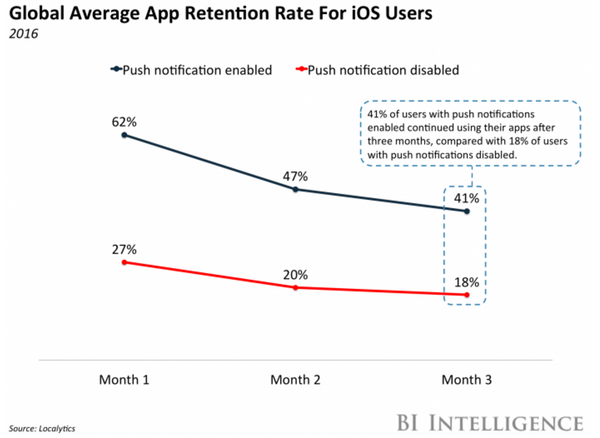M-commerce is all about delivering an easy way to find and read the information quickly and seamlessly, and get what you are looking for without barriers.
Here is the three most common mistakes you should be aware of when integrate mobile experience in your e-commerce business.
Mobile Commerce Equals E-commerce
It’s one of the common and very big mistakes considering mobile commerce and e-commerce the same thing. In case you still think so, you probably do not consider mobile as a significant sales channel you should optimize your business for. Moreover, you probably don’t know that mobile user experience and navigation is very different from web and that payment options may also vary for mobile.
With mobile shopping accounting over 50%, according to Shopify, which continues to grow rapidly in 2017, it’s obvious, that you should pay special attention to mobile part of your e-commerce business and build a native Shopify iOS or Android mobile app to deliver first-class and seamless experience for your buyers.
There are various options to do it, but one of the fastest and cost-efficient ones is to use a Shopify application, such as EasyMobile to convert your Shopify web store to a fully native Shopify iOS mobile application.
It’s also important to monitor your both mobile and web sales channels to measure the progress and work towards optimization of the shopping experience you offer to your customers. EasyMobile also covers this for you, using the Shopify Mobile SDK, which enables you having in-depth stats on your sales channels and configure your collections for each channel.
Too Complex Checkout Process
According to MarketWatch, around 66% of buyers never complete a transaction due to various barriers they face during checkout process. And in most of the cases this is too complex and long form, requiring a buyer to fill out his or her name, billing address, shipping address, credit card number and other details.
Just keep your checkout process as simple as possible and ask only for the very basic information in order to improve the conversion rate.
Also allow your users log into your mobile app and use saved payment information in order not to enter it on a mobile screen again and again. This step sounds very simple, but will allow you making checkout process times more efficient.
Not Using Push Notifications
Push notifications deliver customized offer to the potential buyers 24/7. While statistics proves the power of this tool, today many online merchants still underestimate it.
In today’s highly competitive market, when only 26% of installed apps are in daily use, push notifications can significantly boost the user engagement rate and increase retention.

According to the Business Insider research, users with enabled push notifications in the app have 53% more monthly sessions compared to the users, who are not engaged with push notifications. Moreover, push-enabled user show much stronger first-month retention and higher longevity rates, 61% and 41% respectively.
One of the challenges that is seeing with push notifications through is not very high click-through-rate, and the reason for that is some marketers being too aggressive with their push notification strategies, spamming users with too often or with the offerings they are not interested in. Therefore, be careful and not too intrusive with your push notification strategy to get the most out of it.




